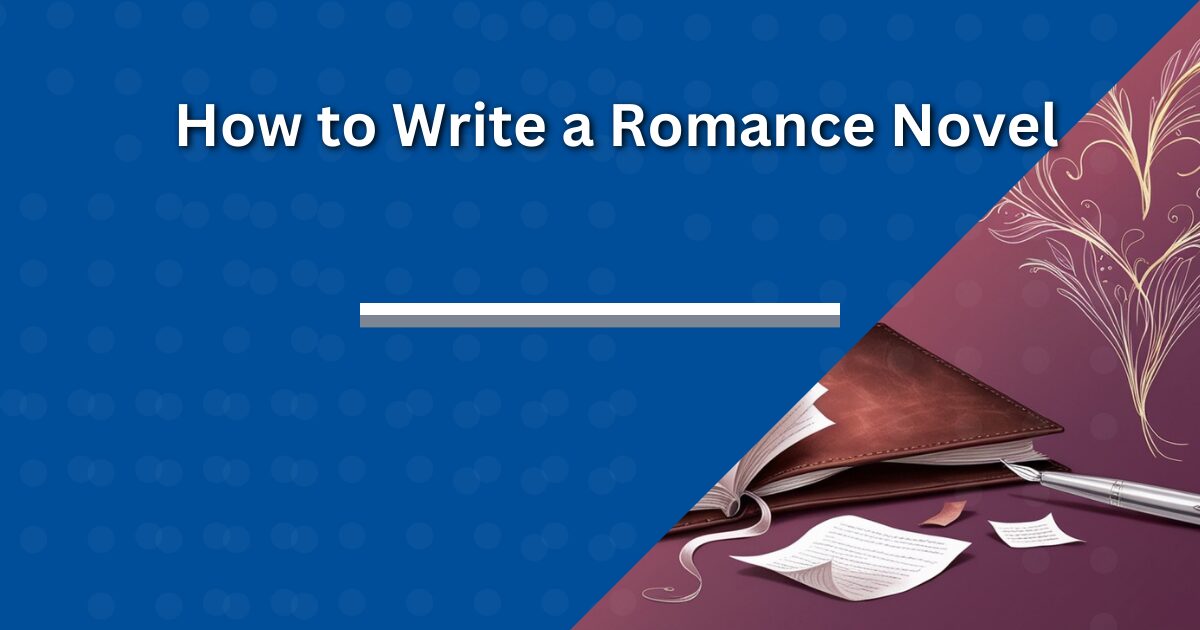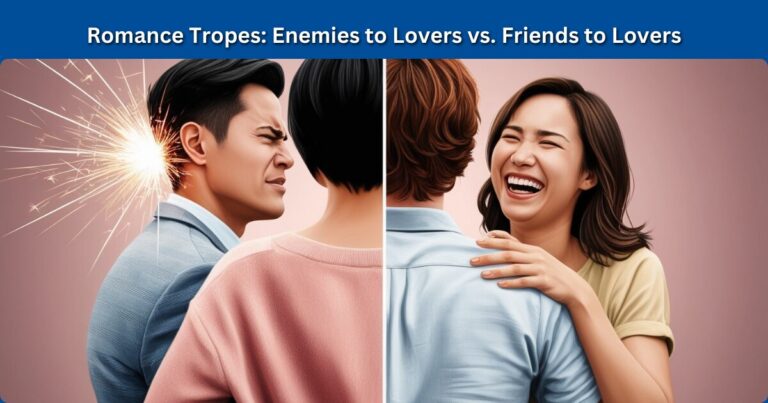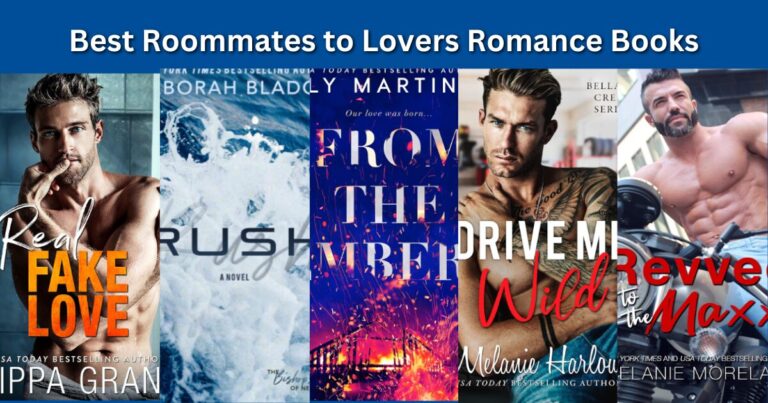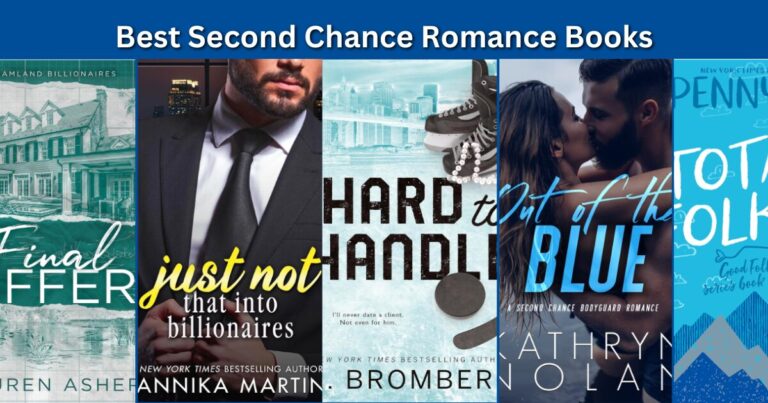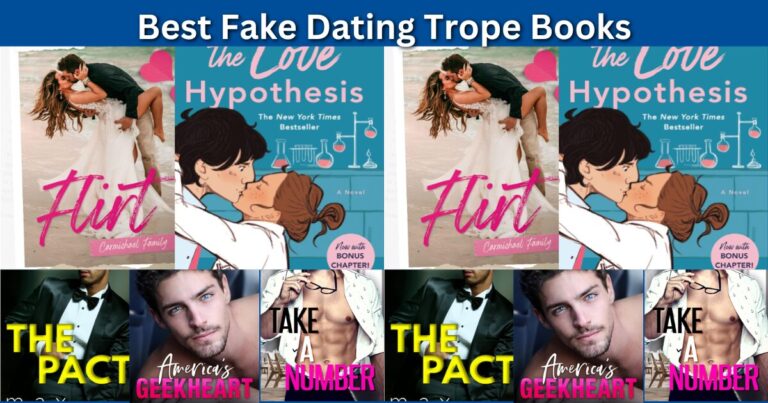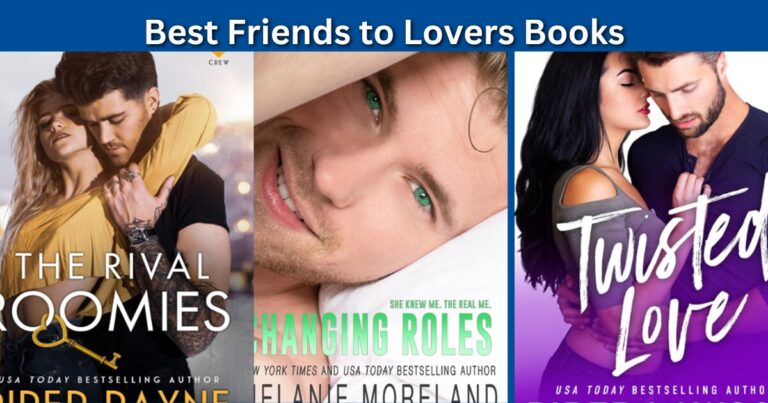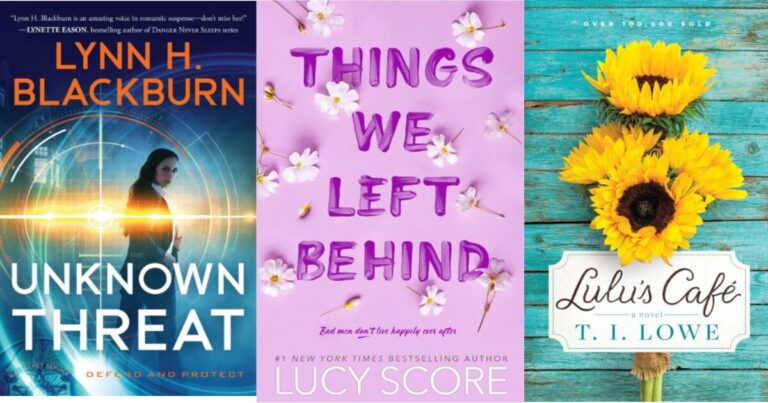How to Write a Romance Novel: Expert Tips & Secrets
Were you aware that romance novels accounted for 18 % of the entire adult fiction sales in the year 2021 which was the second-highest sales figure for fiction in question then?
If you have ever fancied writing your own romantic story and looking for how to go about it, you are in the right place.
Whether it is that you have never held a pen down before or that you are proficient in writing but interested in trying other genres, learning the craft of romance writing can be both fun and hard.
In this guide, let's get into the insider knowledge that is priceless and which the successful writers live by.
Get ready to unleash your inner romantic and create a page-turner that will leave readers breathless.
How to Write a Romance Novel: Key Points
- Understand the genre: Focus on the love story, a happy ending.
- Create compelling characters: Flaws, growth, chemistry.
- Plot structure: Meet cute → Conflict → Resolution.
- Balance romance with subplots.
- Craft sizzling dialogue and chemistry.
- Use setting to enhance mood.
- Develop a unique writing voice.
- Navigate intimate scenes appropriately.
- Edit thoroughly: Self-edit, beta readers, professional help.
- Consider publishing options: Traditional vs. self-publishing.
- Focus on cover design and marketing.
Understanding the Romance Genre
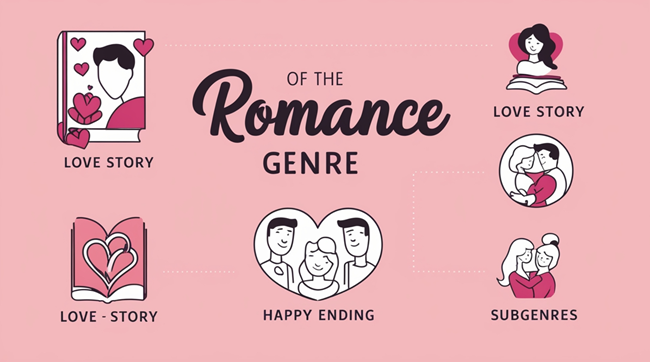
Okay, let's begin with the basics.
What is it that qualifies a work as a “romance” novel?
That is something that I actually had to learn the hard way after giving my first manuscript to a friend, only to have her point out to me, “Um, where is the happy ever after?” Oops!
Allow me to explain; a romance novel is simply a novel that contains a love interest. This is what is known as the main story, as opposed to the extra storyline. And – this is very important – there should somehow be a happy ending.
In some instances, that may not necessarily be the case where there is matrimony and babies, but what it does require is that your lead should end up happily ever after with their love interest.
Now, let's talk subgenres. There are many. There is contemporary, historical, paranormal, suspense, eroticism…the list continues.
Initially, I wanted to write a historical romance novel set in Victorian England. After more research on how to properly hold a cup of tea than writing, I understood that contemporary was better.
The point is, to locate the area that interests you.
Readers' expectations are another biggie. Romance readers are some of the most avid readers and they know what they want. They are looking for that emotional journey, the ups and downs, the ‘Will they?' Won't they?' (even though we know they will).
They want to fall in love right alongside your characters.
As for the market trends, they are very volatile. The other minute, we are into billionaires who are werewolves, the next minute we are into small-town bakers who are looking for love.
So, my advice would be?
Write what you love, but watch what is being sold.
Finally, feel free to examine why some romance novels were so successful. I can't recollect how many times I have read my favorite books to discover what makes them great yet again. It's not about imitation; it's about learning from the best.
Crafting Irresistible Characters
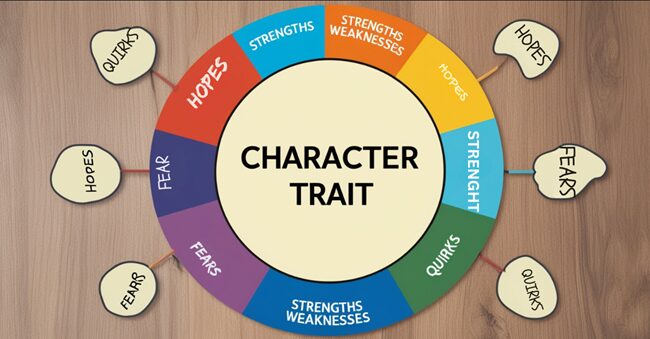
The truth needs to be told, characters are the stronghold in a romance novel. They can make or break a romance novel. I learned this the hard way when my first hero was so perfect, he was actually boring. Yawn!
When it comes to developing multi-dimensional protagonists, think about real people. We're all a mix of strengths, weaknesses, hopes, and fears. Your characters should be too. Give them flaws, quirks, and backstories that shape who they are.
And now the hero will make a woman sigh with delight. Sure, the attraction in question has to be there (who does not like abs), but that is not all.
How come they are so hot?
Is it the humor that they have or their unwavering loyalty?
Do they love puppies too much?
I once created this tough-as-nail businessman hero but he'd drop everything to help his elderly neighbor with her groceries. It is that irony that swoops the readers (including the heroine) off their feet.
Finding a balance between the positive traits of a character as well as the negative ones can be as difficult as walking on a rope.
They are too good to be real?
Boring.
Do they turn out to be too imperfect?
Most likely they may be unlikable.
The elusive excellence lies in keeping them human to the core and still getting things done toward overcoming their shortcomings.
Scholars are shocked to learn that characters can change in a distinctly profound manner and that development and evolution do exist in the arcs of heroes.
Your commitment-phobe heroine may open her heart, or your workaholic hero may learn that there is life outside the office.
Don't forget that the readers will be with these characters for hours on the page. Make them people that you would love to hang out with in real life.
Plotting Your Love Story
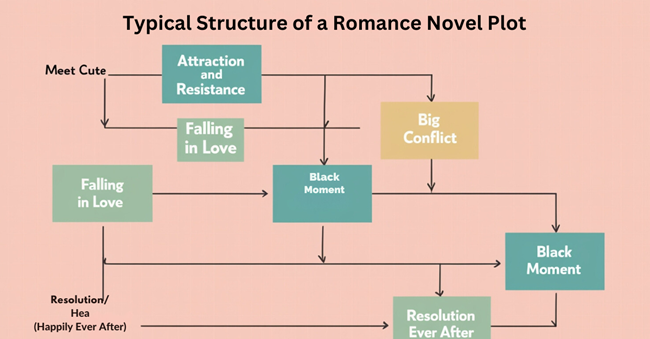
The very first outline I had for plotting a romance novel was like a Jackson Pollock work of art, full of colors, yet all over the place.
Allow me to offer you that pretty headache-saving formula, shall we?
It is important to note that each romance novel should have a proper structure. There is no all-purpose formula, however, most romantic stories follow this structure:
- Meet cute
- Attraction and resistance
- Falling in love
- The big conflict
- Black moment
- Resolution and happily ever after
There are several essential romance plot points, namely the first kiss, the love conflict, the first fight, and the moment when the two protagonists realize that they are in love (which usually comes at different times; otherwise, where is the fun?).
It's undoubtedly challenging(a feat) to balance romance and sub-plots. It is similar to juggling. Your subplots should enhance the main romance, not distract from it.
At one time, I had been so involved in a murder mystery subplot that I was gently brought back to reality by my editor, “We are in a romance, not ‘CSI: Love Edition'”.
Creating tension and conflict is where the real magic happens. It's what keeps readers turning pages at 2 AM, muttering “Just one more chapter.” Do understand that the conflict should be natural and realistic and should not be solvable by saying, ‘Can I talk to you for a second?'”.
I once had my characters break up over a misunderstanding that could have been cleared up with a 30-second chat.
How did my critique partner react?
“Either make the conflict bigger or have them talk about it over coffee. Have it your own way, but this is just annoying.” I never made that mistake again.
In romance, the question doesn't have to be “Will they live happily ever after?”, because we know the writer will make sure they do, the question most people have is; “What hurdles do they face on their way there, and what are the chances of them achieving that?
That's what the journey must be all about; making sure it's full of surprises, exciting, emotional, satisfying, and plenty of happiness at the end of it all.
Mastering the Art of Chemistry

Chemistry – that charming intangible quality that can either make or mar a romance novel – is there for everyone to applaud.
I still remember when a beta reader told me that my lead couple had the chemistry of two wet socks.
No pun intended!
But it was just the jolt I needed.
Writing sizzling dialogue between love interests is an art form. It is not only about the words that are spoken. It is also about the words that are not spoken. The subtext, the tension, the voids – that's where the power is.
Make it or break it- these are the words used in such conversations where all the words are titanic and every utterance has you at the very edge.
Sparking off emotional and physical attraction is quite similar to being a conductor of an orchestra. At one point the orchestra contributes a slow and smooth melody whilst at other times it is full of excitement.
The trick is to increase it step by step. Make the readers experience the increase in connection of the characters.
It is important to note that adding sensory details to a romantic scene is of utmost importance and these details can be used to encourage romance. It's more than just what the characters visualize, but what they can smell, hear, taste, and touch.
One time, I spent an entire afternoon steeping different kinds of tea so as to justify the use of a certain scent for my female protagonist's favorite tea blend. (Okay, maybe I just craved to have an excuse to guzzle tea the entire day, but still!)
Creating melodrama in the midst of heated moments is like seasoning an outstanding dish: one should be careful and not be too generous on either extreme of the spectrum. More sweet, and it becomes sickening. More hot, and you could potentially scare off readers who prefer romance to be more gentle.
Look for that particular equilibrium that fits the narrative and the readership.
Don't forget that chemistry is not only about the physical attraction of the two people on the scene. It is in the way the characters fit in with each other, puzzle each other, and improve each other. If you get this right, please do not be surprised if your readers are melting as well.
Setting the Mood: World-Building in Romance
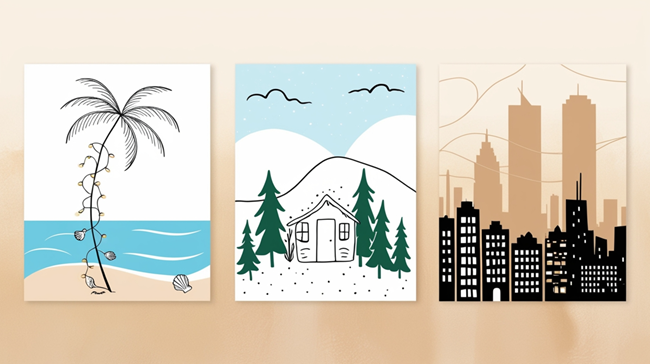
Let's come to the setting, shall we?
I once thought that only fantasy genre writers employed such elements as world-building. You better believe I was wrong! The right atmosphere or mood can help make your romance novel come alive.
Selecting a setting for a romantic story is similar to choosing an outfit for the very first date. It sets the tone and creates expectations. I once set a romance in a small, quirky town in Maine, complete with a lighthouse and a lobster festival. The setting became almost like another character in the story.
An atmosphere can also be painted by using descriptive words. For example, if your story takes place in a cabin in the forest, don't just say it is nice and warm. Make us feel the warmth of the crackling fire, smell the pine-scented air, hear the wind whistling through the trees.
I often shut my eyes and imagine I'm there.
What is it that I perceive with my senses?
What can I taste, what can I hear, what can I touch and what sensations do I experience?
Incorporating setting into character development is a neat trick I learned from a writing workshop. A setting you decide upon can either complement or oppose the personalities of your characters.
For instance, your free-spirited heroine may feel stifled in her structured, corporate job in the city. On the contrary, your guarded hero finds himself opening up in the wide-open spaces of a ranch.
Balancing the pacing with the amount of time spent on world-building can be a challenge. I remember that I became so invested in the description of a splendid vineyard of Tuscany that my critique partner teased me. She was immersed in a travel guide instead of a romantic novel. Oops!
The key is to weave in details naturally, without info-dumping.
Bear in mind that your setting must complement and add to your love story rather than detract from it. Instead, utilize it to establish the tone, introduce conflicts, or provide interactions between the characters that are fresh and interesting.
And who knows?
Perhaps readers will adore your setting just as deeply as they adore your characters!
The Language of Love: Writing Techniques
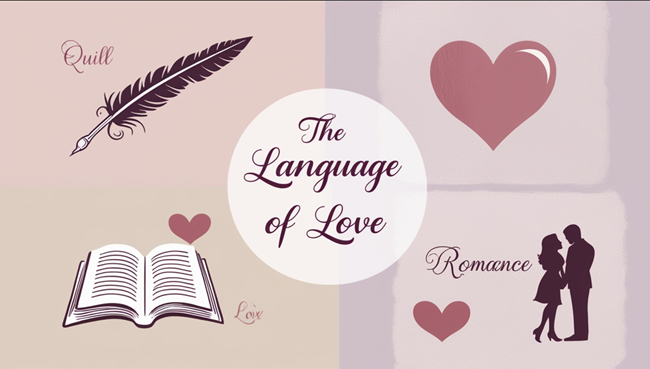
Alright guys, let's get down to the nitty-gritty of writing. Achieving a particular voice in your romance story has been equated to finding a signature perfume. it should be distinctly you, but appealing to others.
This is something I remember having difficulty with. I was trying so hard to sound like my favorite author that I lost my own voice in the process. It was only when I calmed down and wrote like I was telling a story to a friend that things started to click.
Using metaphors and similes wisely and steadily can enhance your writing significantly. Apologies, but you must exercise moderation!
For example, once I referred to a character as having eyes that were ‘pools of molten chocolate' and my writing group couldn't stop laughing. Now, I aim for fresh, unexpected comparisons that feel natural, not forced.
Striking a balance between showing versus telling in emotional scenes is important. It is easy just to state the fact, “She was furious”, but it is great drama when the character is pounding her fists and raising her voice, and flushing her face.
Let your readers experience the emotions alongside your characters.
Writing romantic lines that will remain with people long after they read them is a unique skill.
Which girl hasn't sighed, listening to ‘You have bewitched me, body and soul'?
But here is the catch – these lines have to integrate well with the character and the time. Don't try to force it. Some of the most romantic lines I've written came spontaneously during a heartfelt scene.
Don't forget that good writing in romance isn't about flowery prose or purple passages. It's about clarity.
The goal is precision, the feelings, and the bond nurtured between your characters and your readers. Keep it real, keep it fresh, and most importantly, have fun with it.
Navigating Intimate Scenes
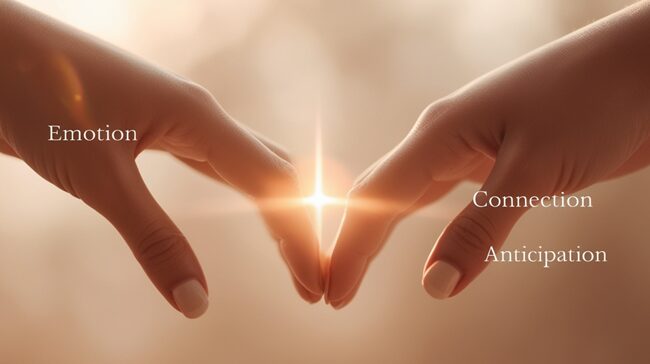
Now, let's get to the part all of you have been waiting for, the juicy bits!
Writing sex scenes can be both enjoyable and terrifying. I remember the first time an instructor asked me to read one of my love scenes in writing class, I remember feeling my cheeks burning – it was just so embarrassingly uncomfortable to do that. Heaven!
How far to go with the intimate scenes in a particular novel is a matter of preference and should fit the subgenre and audience. Certain romance novels are nice and don't include much lust, while others are filled with sex.
There is no good or bad answer to this question – it is just what fits the story and the characters best.
Writing tasteful and engaging love scenes is an art. It is not about anatomical descriptions and some positions to be adopted at the gym. It's about emotion, connection, and the character's journey. I always try to focus on how the characters are feeling, both physically and emotionally.
Using emotional buildup to enhance physical moments is key. The anticipation, the tension, the longing glances – these are what make the eventual intimate scenes satisfying.
One time, I spent a few chapters only to set up a first kiss and my audience told me that it was better than most full-of-attitude love scenes they have so far read.
Addressing consent and respect in intimate encounters is non-negotiable in modern romance writing. It's not simply being politically correct. It's about better relationships for the readers to cheer on. By the way, consent can be found to be quite erotic.
What can be more sultry than a hero saying, ‘Is this okay?' and the heroine exclaims, ‘Yes'!
Whether you're writing sweet kisses or steamy encounters, the most important thing is to stay true to your characters and your story. And perhaps, get a reasonably priced thesaurus because you wouldn't believe the number of times you can use the word ‘heat' in one scene.
Editing and Polishing Your Romance Novel
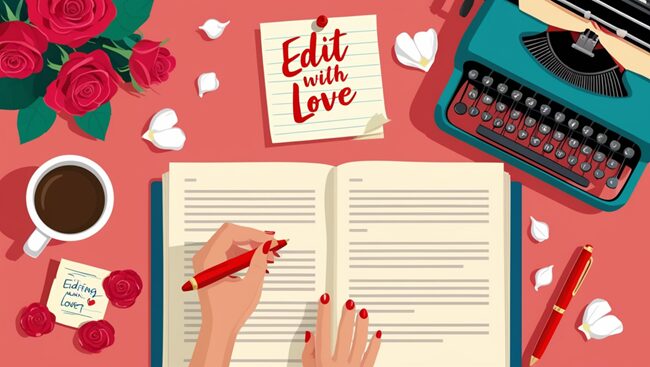
Whew!
You've written “The End” on your first draft.
Congratulations!
Now comes the part that separates the amateurs from the pros: editing.
It is important to effectively self-edit your first draft.
I usually prefer to have my manuscript sit on the shelf for a few weeks together with my passion, to help myself return to it with a new perspective.
It helps me see it with fresh eyes. Then I go through it with a fine-tooth comb, looking for plot holes, character inconsistencies, and places where the pacing drags.
Painstaking as it may be, the input of beta readers and critics has benefited me tremendously. These lovely folks will catch things you missed and give you valuable feedback from a reader's perspective.
However, not every bit of criticism is constructive. Trust your instincts but be open to constructive criticism.
Considering professional editing services can be a worthwhile investment, especially if you're planning to self-publish. An editor will help you remove the remaining barriers to achieving a publishing-ready document.
However, do your research as editors are not equal.
Correcting your manuscript to maximize its effectiveness is much more than looking for and correcting typos (and yes, this is also a considerable issue). It's about making sure every scene moves the story forward, every line of dialogue rings true, and every emotional beat hits home.
There was a time I spent a whole weekend rewriting the first chapter of my novel. It was painful, but when I finally nailed it, the feeling of achievement was overwhelming. Your readers will appreciate the effort you put to polish the story and to make it the best that it can be.
Editing should not be equated with perfection in your story – it is about polishing your story to make it shine. So, roll up your sleeves, grab your red pen (or track changes), and let's make some magic happen!
Publishing Your Romance Novel
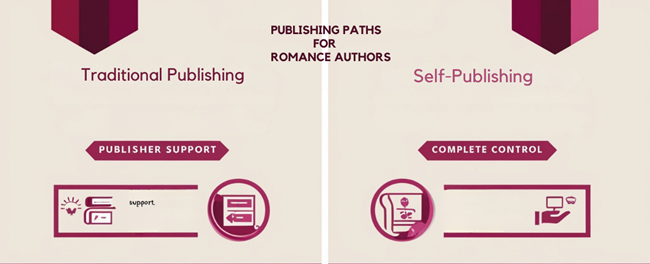
You've already finished writing and editing, it is time to let your child go out into the world. You can take some deep breaths – you've got this.
Deciding between the traditional modes of publishing and self-publishing is a major decision. Both have advantages and disadvantages.
In traditional publishing, there is a lot of prestige and marketing support, but little say in the decision-making.
In self-publishing, you have complete control, but so are the responsibilities. I have done both, and even though I have my intense preferences, there's no one-size-fits-all answer.
If you're following the traditional path, then finding romance-friendly literary agents and publishers is imperative.
Do check if they deal with your subgenre and are looking for new clients. And for the love of God, Please abide by their submission instructions.
Understanding the importance of book covers in romance cannot be overstated. When it comes to this genre, covers are an actual selling point for books. Working with the publishing house or the cover designer you hired, make certain that the cover of your book corresponds to the content and the target audience.
Every author should develop a plan to market a book of their choice irrespective of the mode of publication. Create an author platform, interact with readers on social networks, try posting to book bloggers and reviewers. When I was starting out as an author, I dreaded marketing, but now, I love the challenge of interacting with readers.
Everyone knows that publishing is a business. It is also a community. All these promotion activities may seem very overwhelming, especially where outside advice is considered, but hear this – do not be afraid to approach other authors. We are in this together!
And there you have it, folks! You have been given a quick tutelage on how to write a romance novel. It is a tough and long road, but very worth the pain and effort.
I cannot describe the kind of tremendous satisfaction you feel when you have your very own book in hand, or that first email you receive from a reader who has read your book and loved it.
So what are you waiting for?
Embark on the writing of your first romance novel! Join a community of romance writers, go to workshops, especially for writers, or just take a seat and type away. Your happily ever after is ready to be penned down.
Yes, I do understand that you are an aspiring author hoping to write a book one day. But, kindly remember that every published author was also once in your shoes and daydreams in writing their first book. The difference is, they took that first step.
And now it is your turn. Roll your sleeves up and get down to work, believe in yourself, and in the story you´re telling, and most of all – don´t give up on the dreams.
I hope it will help you in writing, and don't forget that all your romantic journeys should have satisfying conclusions.
FAQs
What is the acceptable length of a romance novel?
Most romance novels are between 50,000 to 100,000 words. Contemporary romances usually tend to stick in a range of 70,000-80,000 words, while historical romances are likely to be longer. But the ideal length is the one that conveys your message effectively without stuffing.
Do I need to follow a specific formula when writing a romance novel?
While there's no particular template to be adhered to, the majority of a body of works that is predominately romance fiction adheres to a defined format: Meeting, falling in love, obstacles, overcoming, and a satisfactory ending.
The key is to make this structure feel fresh and unique to your characters and story.
How can I create a chemistry that is so real between my characters?
Think about not just the physical aspect of any relationship but also the emotional ties. Show how individuals enhance and test each other along the journey. Create tension through dialogue or actions or through thoughts within a character's head.
It is clear, though, that romance is never one-sided; it's all about give and take.
Do I have to include sex scenes in my romance novel?
Not really. The level of intimacy in your novel is based on what and how much you wish to describe your subgenre, and personal preference. Some are ‘sweet' romances while others are ‘steamy' without explicit content.
What is rather important is the intimacy that is suitable for the context of the story and the characters.
How do I avoid clichés in my romance writing?
First, identify common tropes in romance. Then try to reinvent the wheel. Develop complex, realistic characters with genuine conflicts. Focus on what makes your story and characters special. It's not about avoiding all tropes, but using them in fresh ways.
Final Thoughts
You're now armed with the expert tips and secrets to write a captivating romance novel that will make hearts flutter. The key to a great romance isn't just about the steamy scenes or grand gestures – it's about creating authentic characters and emotional connections that resonate with your readers.
Treat the characters naturally, ensuring the feelings of the readers throughout the book.
These tips are integral in writing; however, one should not neglect the individual style and life experiences that could be incorporated into the work.
Why not?
You could be the next best thing in romance novels.
So, what are you waiting for?
Pick up a pen (or laptop), and a blank sheet of paper, and let the true romance story that has always been locked up in your heart and mind flow out of you.
May your romantic stories come to life and sweep the readers off their feet.
